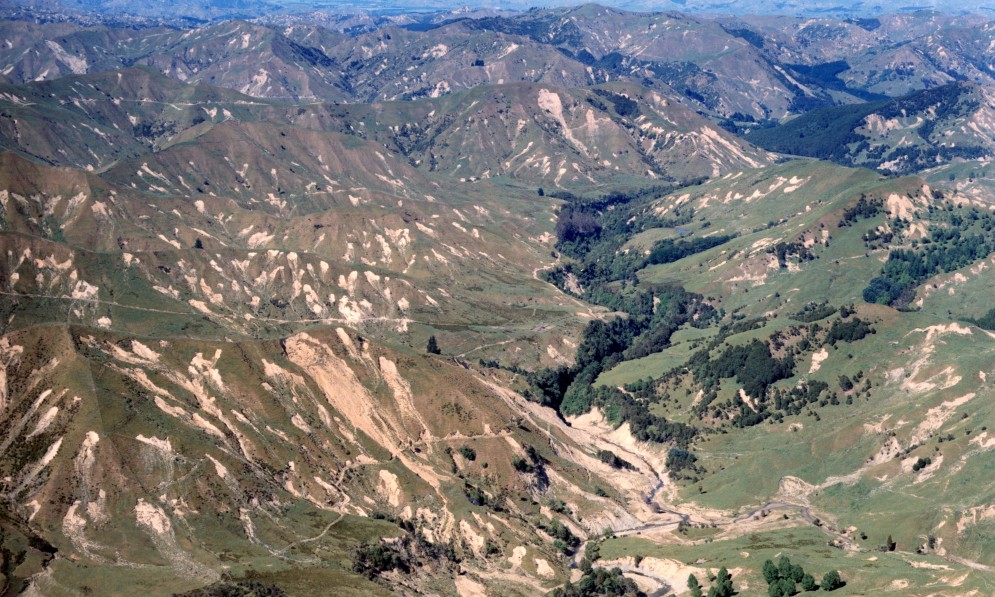Nature-based solutions can help heal the steep hillsides of East Cape and other weather-ravaged communities in Auckland and Hawke’s Bay. By Ann Graeme
Forest & Bird magazine
A version of this story was first published in the Winter 2023 issue of Forest & Bird magazine.
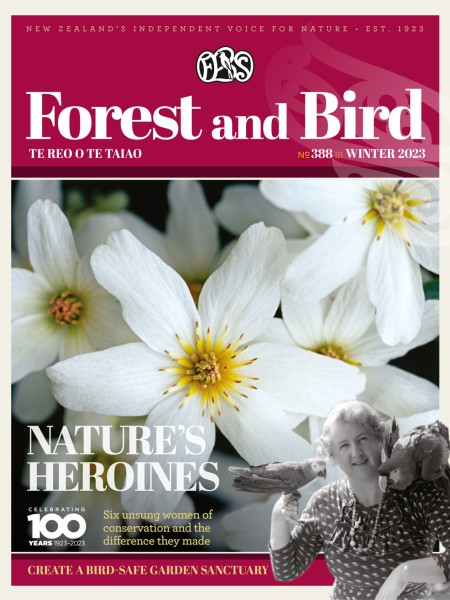
Cyclones Hale and Gabrielle unleashed devastation in Auckland, Hawke’s Bay, and the East Cape in January and February this year. It was a disaster waiting to happen, as Forest & Bird field officer Basil Graeme warned back in 1990.
He visited the Tairāwhiti Gisborne region following Cyclone Bola, in 1988, and saw for himself the erosion and destruction it had caused. He later wrote, in the November 1990 issue of the Society’s magazine, some prescient words:
“The seeds of destruction were laid in our pioneer culture which assigned too freely individual rights with property ownership. Today these rights are infringing the wider rights of the East Cape community … Today the East Cape waits exposed and unprepared for the next cyclone.”
And so it came to pass four decades later with not one but two cyclones only two months apart. What lessons can we learn from the response to Cyclone Bola in 1988 – and from decisions made around land use that go back even further, to the 1960s?
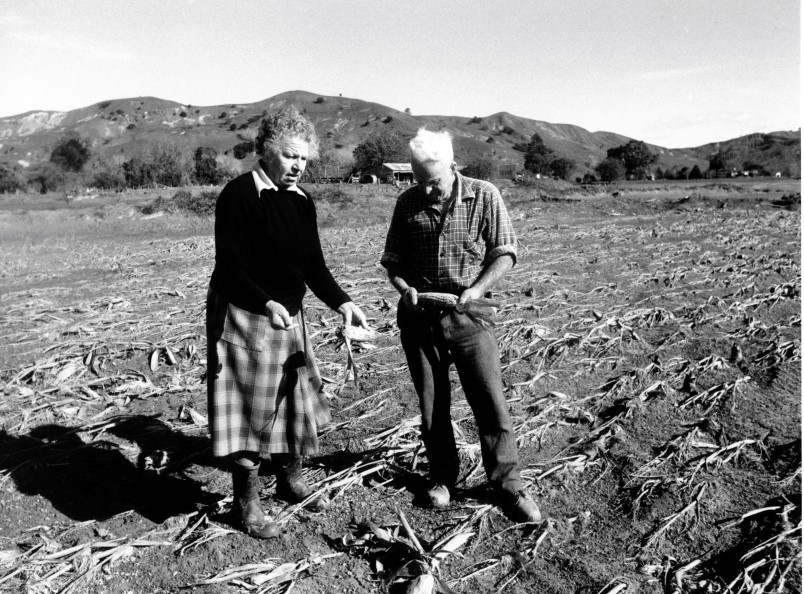
Devastated farmland after Cyclone Bola. Image Forest & Bird archives
After Cyclone Bola, the government gave nearly $200m in a relief fund. It should have been used to buy out and retire the most severely damaged properties. Instead, it helped farmers re-establish grazing and enabled forestry companies to plant pines on the 240,000ha of category 2 and 3 (higher risk) erosion-prone land. It was a huge mistake.
Previously, in the 1960s, under the “East Coast Project”, the worst category 3 land had been retired and planted in pine trees, and these stood up relatively well during Cyclone Bola. But after Bola, these taxpayer-funded “conservation” forests were sold to private companies, felled, and replanted in pines.
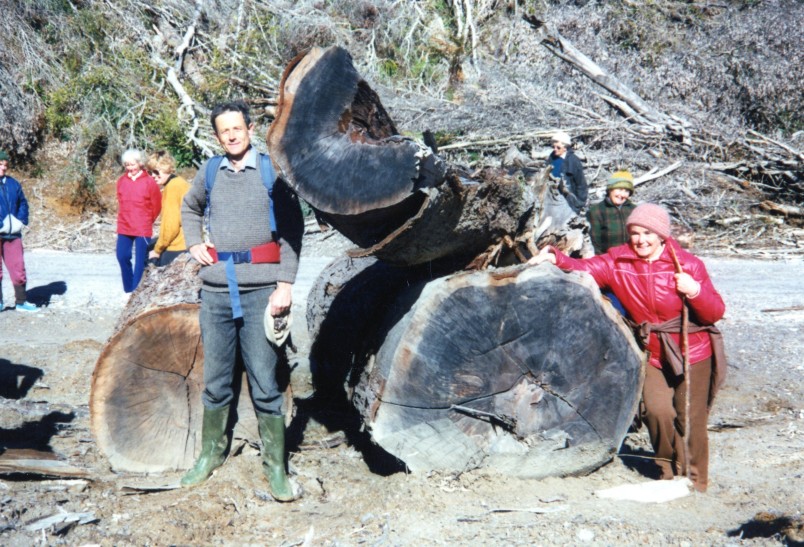
Basil Graeme in 1990. Image: Forest & Bird Archives
Many of these forests are being clear-felled now, while the thin grass of the steep lands is still being grazed. This gave the land very little protection when the worst cyclones in living memory hit the East Cape earlier this year. Now the steep lands are an endless landscape of slips, and the downstream communities are full of mud and misery.
There are many victims in this story. There is the environment, the scarred hills, the lifeless streams choked with silt and slash, and the degraded coast beyond.
There are the people, Ngāti Porou hapū, the forestry workers whose incomes help sustain the East Coast communities, and the downstream farmers whose homes, paddocks, and orchards are deep in mud. And the forestry companies and hill country farmers, whose practices led to this debacle, are victims too.
We need to find a fair and sustainable way forward for them all. We must support all these communities, but, this time, we must do it in a way that offers the local people and the environment a more sustainable future.
To keep the lowlands safe, we need to protect their watershed, the steep lands behind them. The fragile hillsides of farmland and felled pines need a green cloak to shelter them from the hammering rain.
That cloak needs to be a permanent native forest, a carbon sink, protecting the soil from erosion, and the waterways and the sea from the smothering sediment. This will give the downstream hapū and communities the security they deserve.
If this is to be achieved, we need to recognise the most erodible land cannot support any further exploitation, be it for timber trees or for grazing. It must be fostered to regenerate into permanent native vegetation. But how can this be achieved on such a vast and damaged landscape?
Nature could provide a solution, but only if goats and deer are killed and stock removed. Among the thin grass, the naked slips, and pine stumps and slash, weeds will grow but so too will those native pioneers, mānuka and kānuka.
Beneath their canopy other native plants will find shelter and in time – a very long time – a native forest will grow. But for this to happen, nature must be given a helping hand. Vast areas of land need to be fenced, seeded, and weeded, and browsing pests controlled.
As for the established pine forests, many are already protecting soils and streams in the identified zones of instability. These trees must not be harvested! While they stand, they provide erosion control, sequester carbon, and shelter native species establishing beneath them.
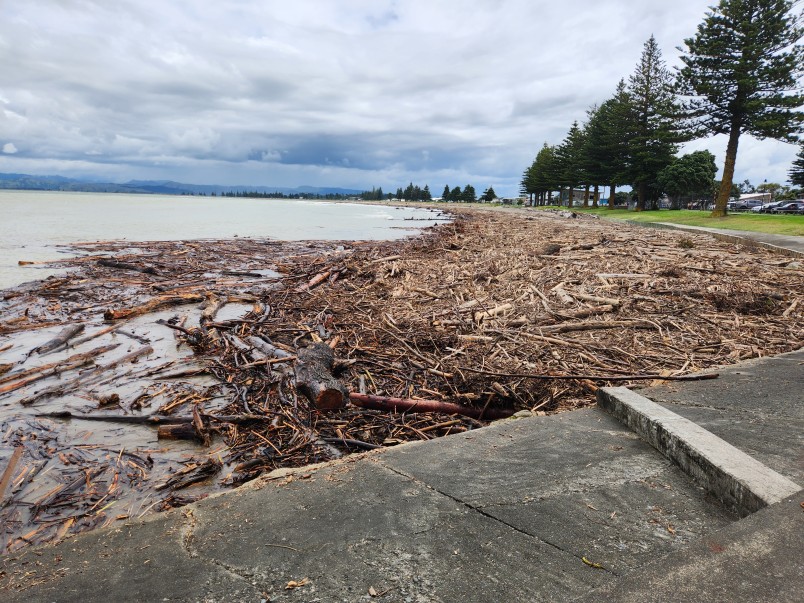
Forestry slash on Gisborne foreshore, in 2023. Image Barry Foster
Papamoa Forest, Gisborne, is being restored with native planting, while controlling goats, deer, and possums has allowed natural bush regrowth. Image Barry Foster
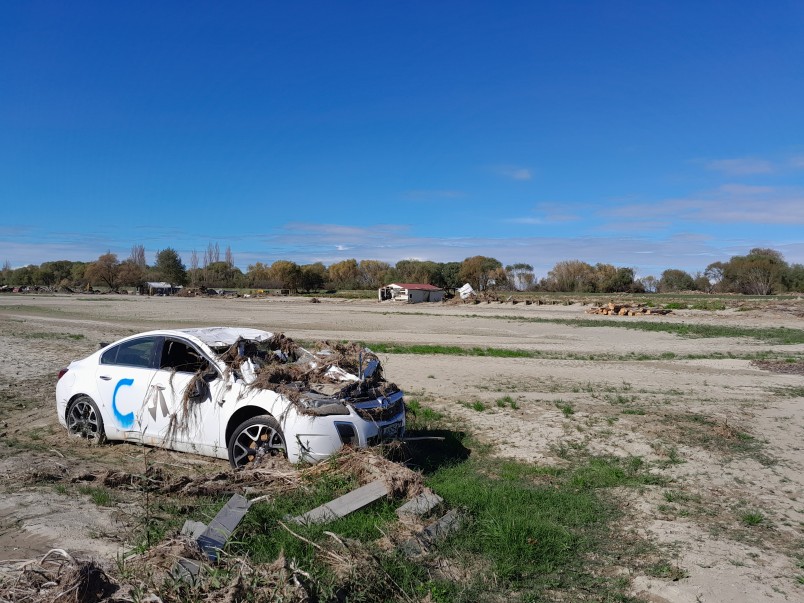
Damage caused by Cyclone Gabrielle, Dartmoor Road, near Puketapu, Hawke’s Bay. Image Chantal Pagel
But these solutions involve costs – enormous costs – and they deprive the landowners and the communities who depend on forestry and farming of their incomes. An alternative source of income for the landowners needs to be provided, and the Emissions Trading Scheme in its present form does not yet provide it.
These restoration actions required on the vast retired land could provide work and income. Some will need fencing. All will need ongoing pest control if goats, deer, pigs, and possums are not to undo the work of restoration.
On naked slips, planting and possibly aerial drone seeding of mānuka and kānuka will speed restoration. Forest workers might find work in fencing, pest control, planting, track cutting, and weed management. And, yes, pine trees might help (see box).
Big problems require big solutions, and the challenge of revegetating the East Cape is enormous. We must accept that, although the task lies on private land, its resolution will be a public good. We, the taxpayers, must take responsibility for this fragile landscape and its dependent communities.
It is time to value existing native forests, and the growing of native forests, as assets that pay their way in the carbon they store, the catchments they protect, and the downstream costs and damages they avert. The East Cape has been exploited for too long, and the time for restitution is now.
“Enough is enough!” says Basil Graeme, 81, who is still an active conservationist today. “Fix the Emissions Trading Scheme and provide a way out for farmers and foresters on the East Cape.”
Transition Forests
On the most erosion-prone land where felling the existing pine forests is untenable, standing pines can be a pathway to restoring native forest. This has been given a catchy name, “transition forests”. Projects are under way, such as that being undertaken by Tāne’s Tree Trust, to find out what native plant regeneration can be achieved under pine tree stands and how their conversion can be encouraged with different environmental and planting conditions. Do they need to be thinned to help understorey growth, and can this occur without causing erosion? Will the planting of islands of missing and diverse native species speed up natural regeneration? Maybe pines themselves could be planted at wide spacing, not for timber, but to specifically act as a nurse crop to native regeneration.
Who foots the bill?
For the re-assigned workers, the government – that’s us taxpayers – would pay the wages. For the farmers, the Emissions Trading Scheme (ETS) could provide an incentive for destocking their pasture because the land will qualify for carbon credits. But for foresters, there is no incentive to leave their forests standing, as the ETS will not provide them with carbon credits if the first historical tree planting was before 1990. This is because the ETS is based on international rules aimed at stopping countries from cheating on their targets. This arbitrary date is intended to encourage new plantings on land deemed unsuitable for grazing, which is fine for East Cape farmers but disqualifies foresters who own older plantation forests, despite the carbon store they hold and the catchment protection they provide. In New Zealand, we need to reward the owners of forests that are protecting our climate, native habitats, and downstream communities. Parliament has a responsibility to fix this anomaly.
Forest & Bird volunteers at Gray’s Bush, near Gisborne. Image Forest & Bird
Stopping forestry slash
From the ravaged slopes, where pine trees were newly harvested, came the mountains of waste timber called slash, piled against bridges, smashed against fences, and strewn over beaches. It was often more visible than the silt and the mud, and has come to epitomise the damage caused by the cyclones. Fingers were pointed at demon pine trees, but it is not the pine trees in themselves that were at fault. It was the method of forestry. Any trees clear-felled in one go on those steep, erodible hills, leaving waste wood behind, would have led to disaster in similar circumstances. Under normal rain, this slash was expected to stay in place and act as a filter against sediment run-off. But “normal” should no longer be the expected.
Island of green
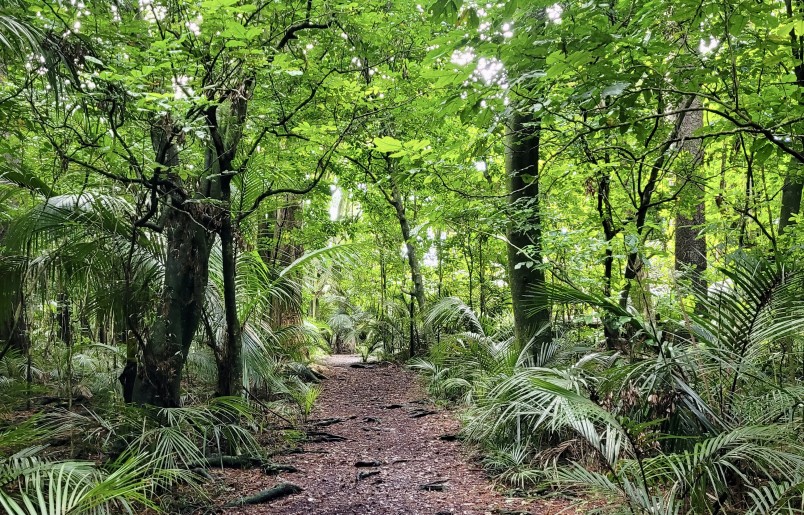
Gray's Bush. Image David Lynn
The cyclones didn’t spare native habitats either. Native forests suffered, especially those riddled with pests, their undergrowth and the spongy moss on the forest floor eaten and stomped out by deer and goats. But one place welcomed the deluge. Gray’s Bush is a swamp forest on the Gisborne plains, the only surviving remnant of an extinct forest type, an assemblage dominated by kahikatea and pūriri.
Surrounded by drained and cultivated paddocks, it struggles against drying out. For years, Forest & Bird’s Gisborne Branch has cared for the forest, by controlling pests and tackling invasive weeds. A few days after Cyclone Hale, Grant Vincent, chairman of the branch, went to see how the forest had fared. “It did my heart good to see,” he said. “Streams were running down the forest paths, ponding and creating little lakes around the kahikatea and the buttresses of the pukatea. The pūriri, less fond of puddles, stood on the slightly raised ground, well watered but not water-logged.” Days after the storm had passed, the forest floor was still soaking up the flood water, an island of green in a drowned landscape.
☛ “We lost 20 years of restoration planting” – read Dean and Geoff’s climate story

